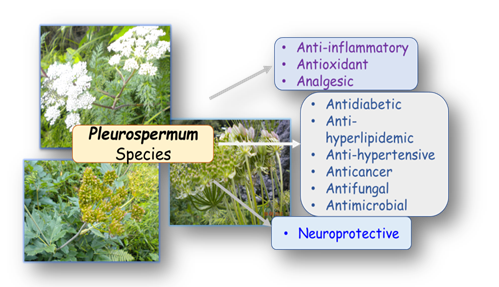JOURNAL 2879
Records of Agricultural and Food Chemistry
Year: 2023 Issue: 2 July-December
p.21 - 35
Viewed 1863 times.
GRAPHICAL ABSTRACT

ABSTRACT
The Apiaceae botanical family and the Pleurospermum genus have been recognized as valuable reservoirs of natural antioxidants, finding extensive applications in medicinal, pharmaceutical, nutraceutical, cosmeceutical, and culinary realms. This is attributed to their rich array of bioactive phytochemicals and their diverse range of biological activities. Essential oils are complex mixtures of hydrocarbons, and their oxygenated derivatives arise from two different isoprenoid pathways. Glandular trichomes and other secretory structures, specialized secretory tissues primarily distributed on the surface of plant organs, notably flowers and leaves, generate essential oils. Essential oils play a crucial ecological role within the plant. In addition, since ancient times, essential oils have been used in many different traditional healing systems worldwide because of their biological activities. Moreover, this review will attract the attention of scientists from aroma industries, nutritionists, and pharmaceutical industries to improve the use of essential oils for nutraceutical purposes with commercialization to aid and promote healthy lifestyles, wellness, and well-being.
KEYWORDS- Apiaceae
- essential oils
- Pleurospermum
- antioxidant
- antiviral